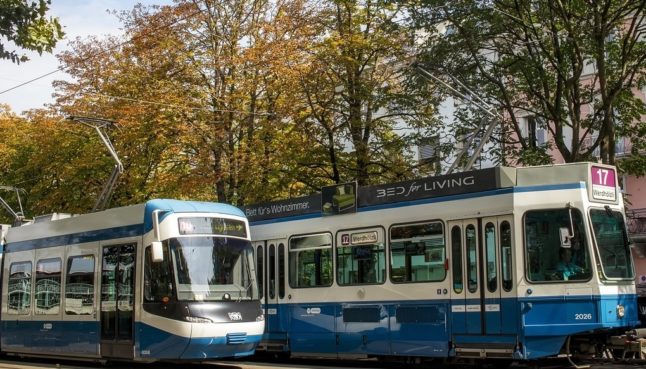Using a weekend city trip as a yardstick, The Local looked at the average costs of a visit to Zurich, factoring in accommodation, dining, public transport and sightseeing.
Accommodation
Based on data from the online booking platform trip.com, the average price for a hotel room per night in Zurich in 2024 is 149 francs – roughly €157.
Of course, this greatly depends on the level of comfort you’re looking for.
A room in a popular budget hotel near the central train station, like Hotel Bristol, can run as low as 47 francs / €50 per night for a private room.
On the other end of the scale, a room in a luxury hotel like the iconic Hotel Storchen starts at around 547 francs / €574.
For a two-night stay in the city, budget around 350 francs / €370 – assuming you have two people sharing.
Dining
According to the crowdsourced travel information site Budgetyourtrip.com, the average meal in Zurich costs around 24 francs / €26.
Again, this depends on what you’re looking for. Hitting up a popular street food spot like Sternen Grill will cost you around 16 francs / €15 for a Bratwurst in a roll with mustard and a drink.
Conversely, you could splurge on a Michelin-star restaurant like La Rotisserie, part of the Hotel Storchen, and spend 300 francs / €315 per person.
For a two-night stay in Zurich, expect to pay 156 francs / €163 per person to eat.
READ ALSO: Nine Zurich life hacks to make you feel like a local
Public Transport
Thankfully, Zurich is serviced by an excellent public transport network, and getting around couldn’t be easier.
It may also be the easiest part to budget for your Zürich city trip.
The Zürich Card offers unlimited 2nd class travel on all buses, trains, boats, funicular railways and other forms of public transport in the Zürich region.
A 24-hour pass costs 29 francs / €30.41, while a 72-hour pass costs 56 francs / €58.74.
For two nights in Zürich, it’ll cost you about 56 francs / €58.74 per person to get around the city.
Sightseeing
What you spend on sightseeing in Zurich can be the most variable part of your budget, depending on what you want to see.
Strolling around the Old Town and Lake Zurich and visiting historic churches such as the Grossmünster and Fraumünster are free.
A trip up the Uetliberg is also free, as you can take a tram covered by your public transport ticket.
You could also visit such museums as the Landesmuseum Zürich (13 francs / €13.63), the Swiss Finance Museum (10 francs / €10.49 ), the FIFA Museum (26 francs / €27.27 ) and the Lindt Home of Chocolate (15 francs / €15.73).
Gallery offerings include the Kunsthaus Zürich (24 francs / €25.17 ), the Kunsthalle Zürich (12 francs / €12.58) and the Pavilion Le Corbusier (12 francs / €12.58).
It’s important to note that some museums and galleries offer free entry with the Zurich Card – it’s worth checking at the ticket counter.
Enjoying a boat trip on Lake Zurich is really worth your while, and a cruise with a vessel operated by the ZVV will cost 44.60 francs / €44.76 for first class and 27 francs / €28,32 for second class,
READ ALSO: Five beautiful Swiss villages located less than an hour from Zurich
Suppose you operate on the assumption that you might see two museums daily and take a boat cruise during your trip.
Budgeting 120 francs / €125.85 per person, is not unreasonable in that case.

And in the end…?
With some quick back-of-the-napkin maths, if you’re a couple expecting to spend two to three nights in Zurich, you can expect to pay around 1,062 francs / €1114.
While not the cheapest European destination, it’s more than made up for by natural beauty in scoops, a treasure trove of art, culture and history, and some of central Europe’s best dining.



 Please whitelist us to continue reading.
Please whitelist us to continue reading.
Member comments